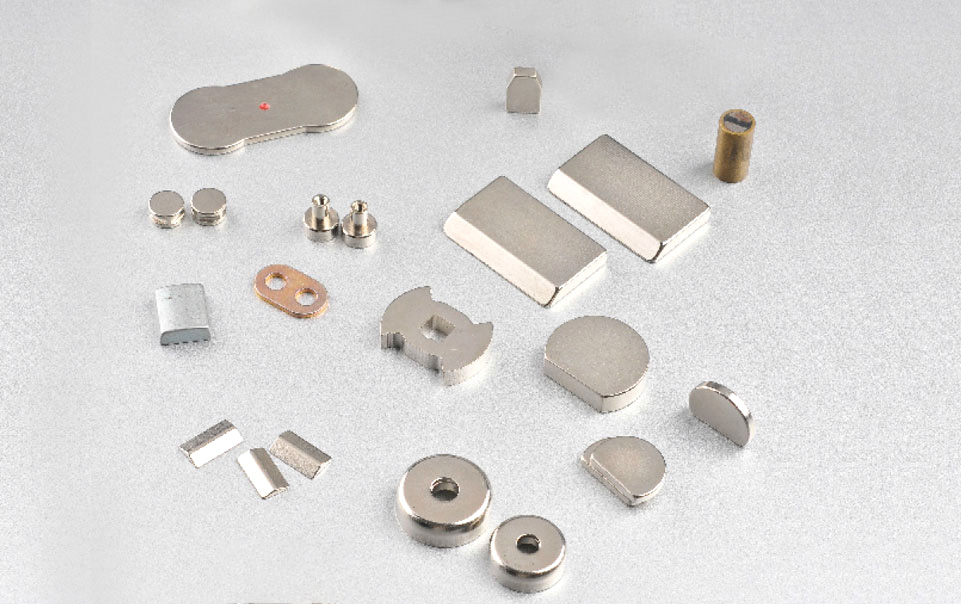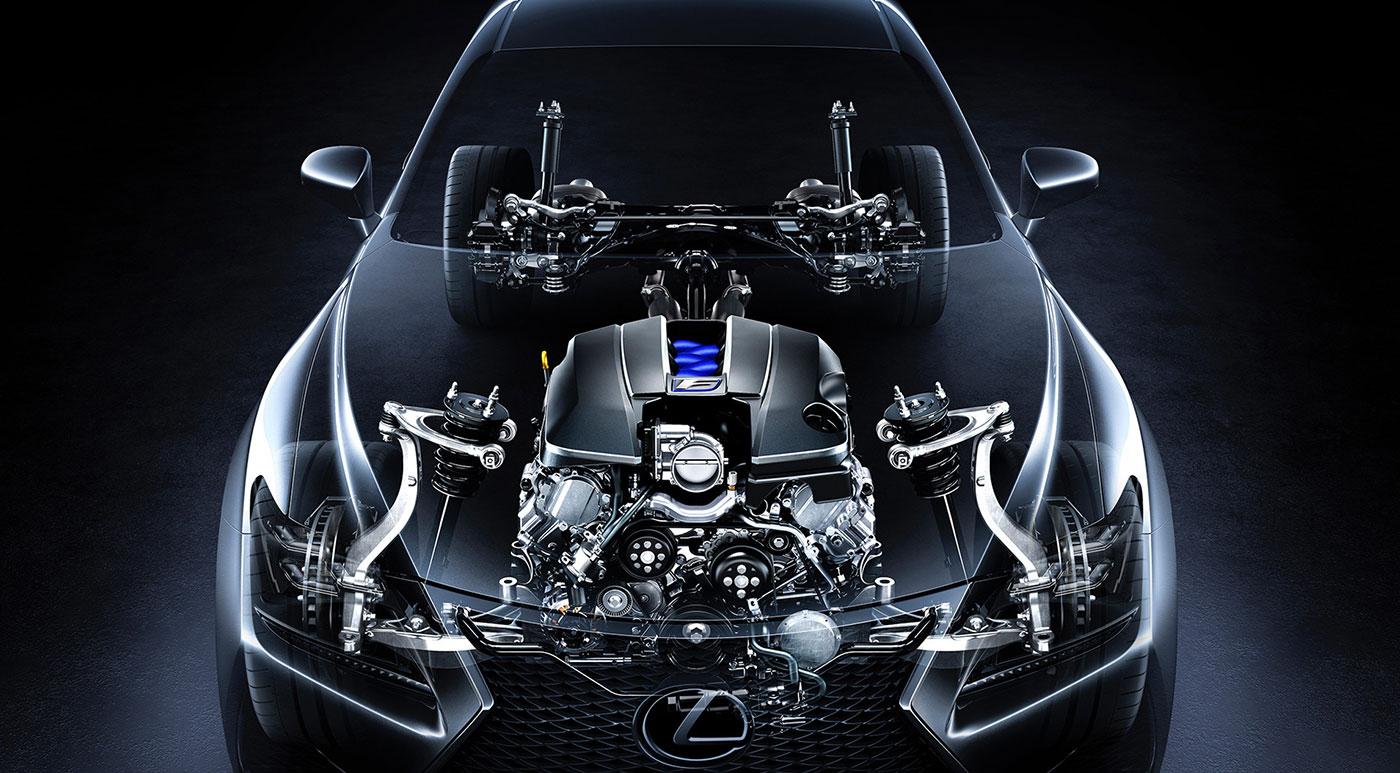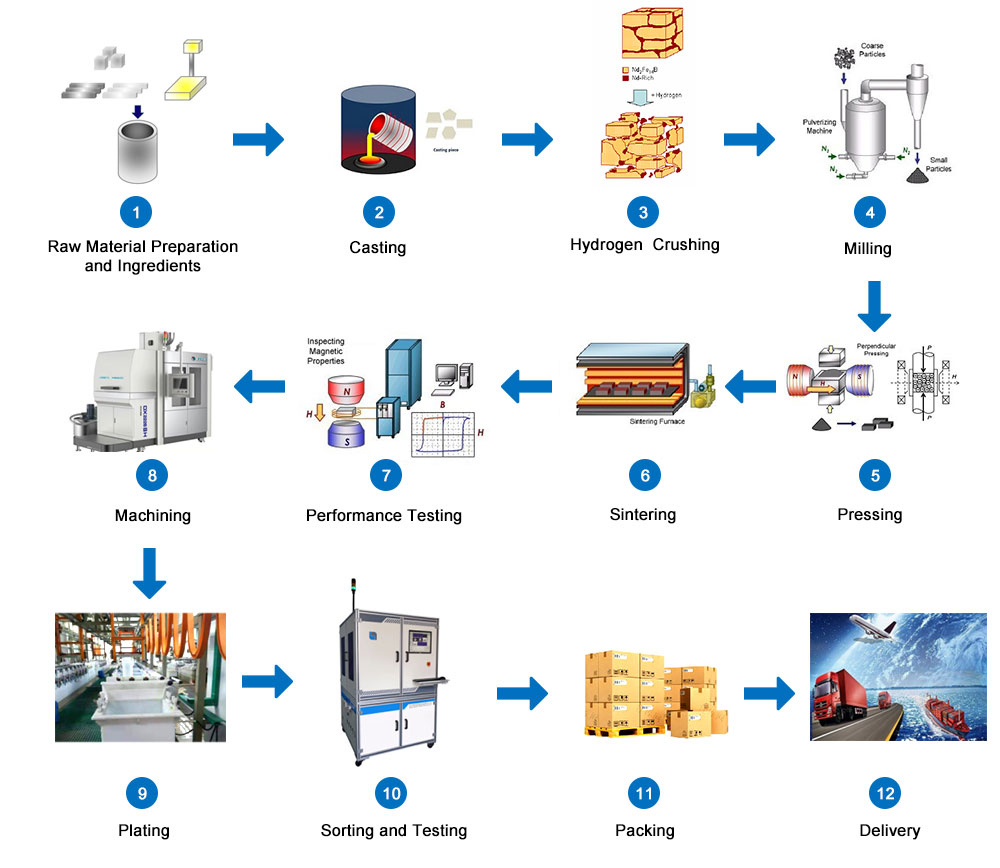Main magnetic properties of sintered neodymium iron boron: contains the remanence (Br), intrinsic coercivity (Hcj), magnetic induction, coercivity (Hcb), maximum magnetic energy product ((BH) max) in permanent magnetic materials, auxiliary magnetic properties: Including the relative recoil permeability (μrec), the temperature coefficient of remanence (α(Br)), the temperature coefficient of the coercivity of the magnetic polarization strength (α(Hcj)), and the Curie temperature (Tc) of the sintered NdFeB permanent magnet material ) Material classification: Sintered NdFeB permanent magnet materials are divided into low coercive force N, medium coercive force M, high coercive force H, super high coercive force SH, ultra-high Coercive force UH, extremely high coercive force EH grades: each type of product is divided according to the maximum magnetic energy area and several material grades are N35-N52, N35M material—N50M material, N30H material—N48H material, N30SH material—N45SH material.
N28UH—N35UH, N28EH—N35EH Digital grades: Grade example: 048021 means (BH) max is 366~398kj/m, Hcj is 800KA/m sintered neodymium iron boron permanent magnet material. Character designation: The designation of sintered neodymium iron boron permanent magnet material consists of the main name and two magnetic properties of three parts. The first part is the main name, consisting of the chemical symbol of neodymium element ND, the chemical symbol of iron element FE and the chemical symbol of boron element B The second part is the number before the line, which is the nominal value of the material’s maximum magnetic energy product (BH) max (unit: kj/m), and the third part is the number after the diagonal line, the coercive force value of the magnetic polarization ( The unit is one-tenth of KA/m), and the value is rounded up. Grade example: NdFeb380/80 means (BH) max is 366~398kj/m, Hcj is 800KA/MR sintered neodymium iron boron permanent magnet material. Chemical composition: NdFeB permanent magnet material is a permanent magnet material based on the intermetallic compound RE2FE14B. The main components are rare earth (RE), iron (FE), and boron (B). Among them, rare earth ND can be partially replaced by other rare earth metals such as dysprosium (Dy) and praseodymium (Pr) in order to obtain different properties. Iron can also be partially replaced by other metals such as cobalt (Co) and aluminum (Al). The content of boron is small, but However, it plays an important role in the formation of tetragonal crystal structure intermetallic compounds. The compound has high saturation magnetization, high uniaxial anisotropy and high Curie temperature. The manufacturing process sintered NdFeB permanent magnet material adopts the powder metallurgy process. The smelted alloy is made into powder and pressed into a compact in a magnetic field. The compact is sintered in an inert gas or vacuum to achieve densification, in order to improve the correction of the magnet. Coercivity, usually requires aging heat treatment. Jinluncicai.com manufacture block, ring, disk ndfeb magnet and sintered magnet with latest technology.

Material application Sintered NdFeB permanent magnet materials have excellent magnetic properties, and are widely used in electronics, electrical machinery, medical equipment, toys, packaging, hardware machinery, aerospace and other fields. The more common ones include permanent magnet motors, speakers, and magnetic separators. Computers, computer disk drives, magnetic resonance imaging equipment, meters, etc. Bonding NdFeB Product introduction: It is manufactured by powder metallurgy. Chemical composition: Nd2Fe14B high remanence, high coercivity, high energy product, high performance and price ratio. The surface coating or electroplating has low corrosion resistance. It is easy to process various sizes and minimum specifications, and is widely used in various fields.
NdFeB bonded permanent magnet material is made by adding NdFeB magnetic powder into a binder. Since Japan successfully developed this material in 1988, its development has achieved considerable speed of sound and its output has doubled. As a high-performance permanent magnet material, it is in line with the trend of short-term, small, light-weight and thin modern electronic products. Application: The production and application development of bonded neodymium iron boron permanent magnet materials are relatively late, and the application area is not wide, and the amount is small. It is mainly used for office automation equipment, electrical equipment, audio-visual equipment, instrumentation, small motors and measuring machinery, It is widely used in the fields of mobile phones, CD-ROM, DVD-ROM drive motors, hard disk spindle motors HDD, other micro DC motors and automated instrumentation. In recent years, the application ratio of bonded NdFeB permanent magnet materials in my country is: 62% for computers, 7% for electronics industry, 8% for office automation equipment, 7% for automobiles, 7% for appliances, and 9% for others. Compared with sintered magnets, it can be formed at one time without secondary processing, and can be made into magnets of various complex shapes. This is also incomparable to sintered magnets. Application of it can greatly reduce the volume and weight of the motor.
Permanent magnetic materials Introduction Permanent magnetic material (permanent magnetic material) has a wide hysteresis loop, high coercivity, high remanence, once magnetized to maintain a constant magnetic material. Also known as hard magnetic materials. In practice, the permanent magnet material works in the second quadrant demagnetization part of the magnetic hysteresis loop after deep magnetic saturation and magnetization. Commonly used permanent magnet materials are divided into Al-Ni-Co-based permanent magnet alloys, Fe-Cr-Co-based permanent magnet alloys, permanent magnet ferrites, rare earth permanent magnet materials and composite permanent magnet materials.
①Al-Ni-Co-based permanent magnet alloy. With iron, nickel, and aluminum as the main components, it also contains copper, cobalt, titanium and other elements. With high remanence and low temperature coefficient, magnetic stability. There are two types: casting alloy and powder sintered alloy. There were many applications in the 1930s to 1960s, and it is now mostly used in the instrument industry to manufacture magnetoelectric meters, flow meters, micro motors, relays, and so on.
②FeCrCo permanent magnet alloy. With iron, chromium, and cobalt as the main components, it also contains molybdenum and a small amount of titanium and silicon. Its processing performance is good, it can undergo cold thermoplastic deformation, its magnetic properties are similar to that of AlNiCo permanent magnet alloys, and its magnetic properties can be improved through plastic deformation and heat treatment. It is used to manufacture all kinds of small magnetic components with small cross-sections and complex shapes.
③Permanent ferrite. There are mainly barium ferrite and strontium ferrite, which have high resistivity and high coercivity, and can be effectively used in large gap magnetic circuits, and are especially suitable for permanent magnets in small generators and motors. Permanent magnet ferrite does not contain precious metals such as nickel, cobalt, etc. It has a rich source of raw materials, simple process and low cost, and can replace AlNiCo permanent magnets to manufacture magnetic separators, magnetic thrust bearings, speakers, microwave devices, etc. However, its maximum magnetic energy product is low, temperature stability is poor, and the texture is brittle, fragile, and not resistant to shock and vibration. It is not suitable for measuring instruments and magnetic devices with precision requirements.
④ Rare earth permanent magnet materials. Mainly rare earth cobalt permanent magnet materials and neodymium iron boron permanent magnet materials. The former is an intermetallic compound formed by the rare earth elements cerium, praseodymium, lanthanum, neodymium, etc. and cobalt. Its magnetic energy product can reach 150 times that of carbon steel, 3 to 5 times that of alnico permanent magnet materials, and 8 to that of permanent ferrite. 10 times, low temperature coefficient, stable magnetism, coercivity up to 800 kA/m. Mainly used in low-speed torque motors, starting motors, sensors, magnetic thrust bearings and other magnetic systems. The neodymium iron boron permanent magnet material is the third generation rare earth permanent magnet material. Its remanence, coercivity and maximum magnetic energy product are higher than the former, it is not fragile, has good mechanical properties, and the alloy density is low, which is conducive to the light weight of magnetic components. Sizing, thinning, miniaturization and ultra-miniaturization. But its high magnetic temperature coefficient limits its application.
⑤Composite permanent magnet material is compounded by permanent magnetic substance powder and plastic substance as a binder. Because it contains a certain proportion of binder, its magnetic properties are significantly lower than the corresponding magnetic materials without binder. Except for metal composite permanent magnetic materials, other composite permanent magnetic materials are limited by the heat resistance of the binder, so the service temperature is relatively low, generally not exceeding 150°C. However, the composite permanent magnet material has high dimensional accuracy, good mechanical properties, and good uniformity of the performance of each part of the magnet, and it is easy to carry out the radial orientation and multi-pole magnetization of the magnet. Mainly used in the manufacture of instruments and meters, communication equipment, rotating machinery, magnetic therapy equipment and sporting goods, etc.
The first category of classification: alloy permanent magnet materials, including rare earth permanent magnet materials (NdFeB Nd2Fe14B), samarium cobalt (SmCo), aluminum nickel cobalt (AlNiCo) The second category: ferrite permanent magnet materials (Ferrite) The production process is divided into: sintered ferrite, bonded ferrite, and injection molded ferrite. These three processes are divided into isotropic and anisotropic magnets according to the orientation of the magnetic crystal. These are the main permanent magnet materials currently on the market, and some are eliminated due to production process or cost reasons, which cannot be used in a wide range, such as Cu-Ni-Fe (copper nickel iron), Fe-Co-Mo (iron, cobalt, molybdenum) ), Fe-Co-V (iron cobalt vanadium), MnBi (manganese bismuth)


 sales00@jlmagnet.com
sales00@jlmagnet.com






